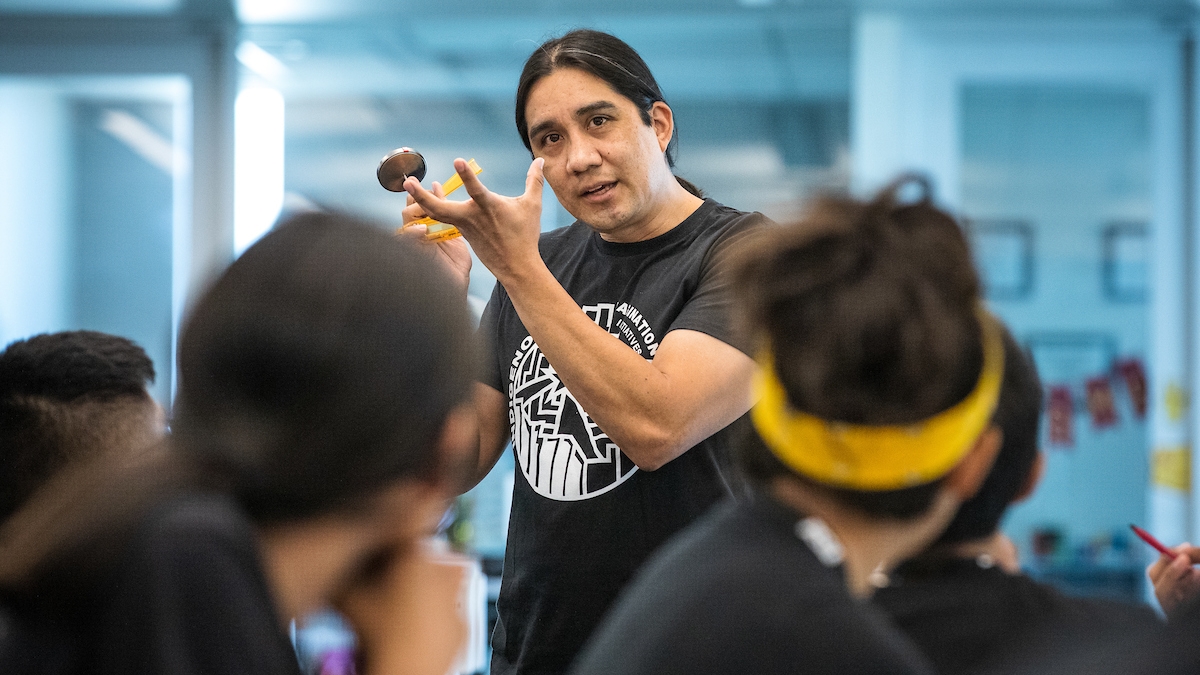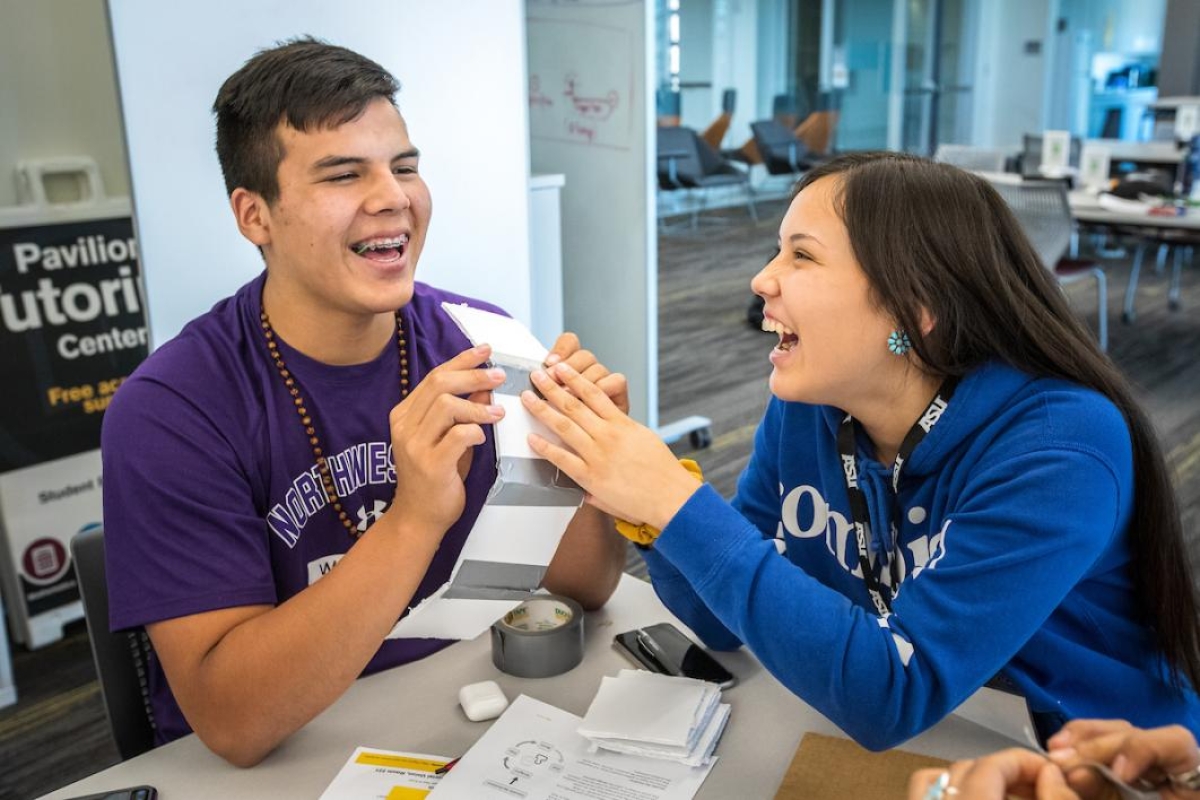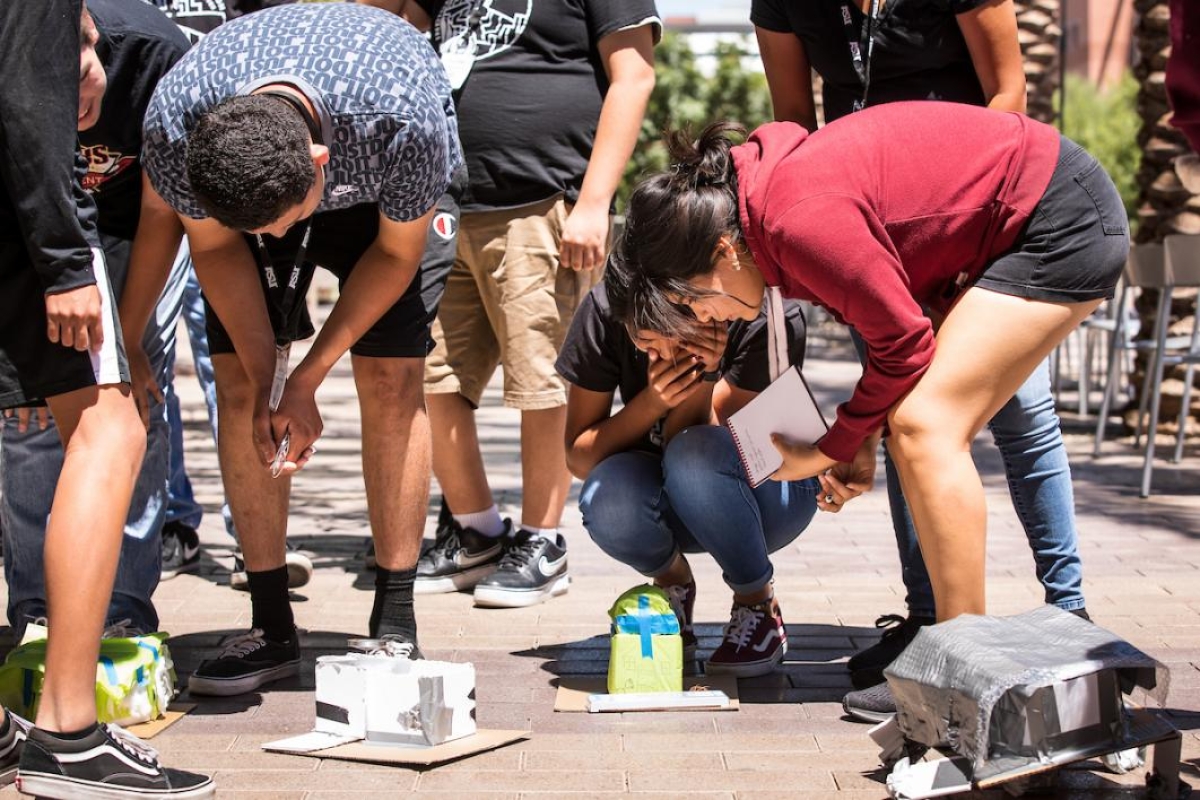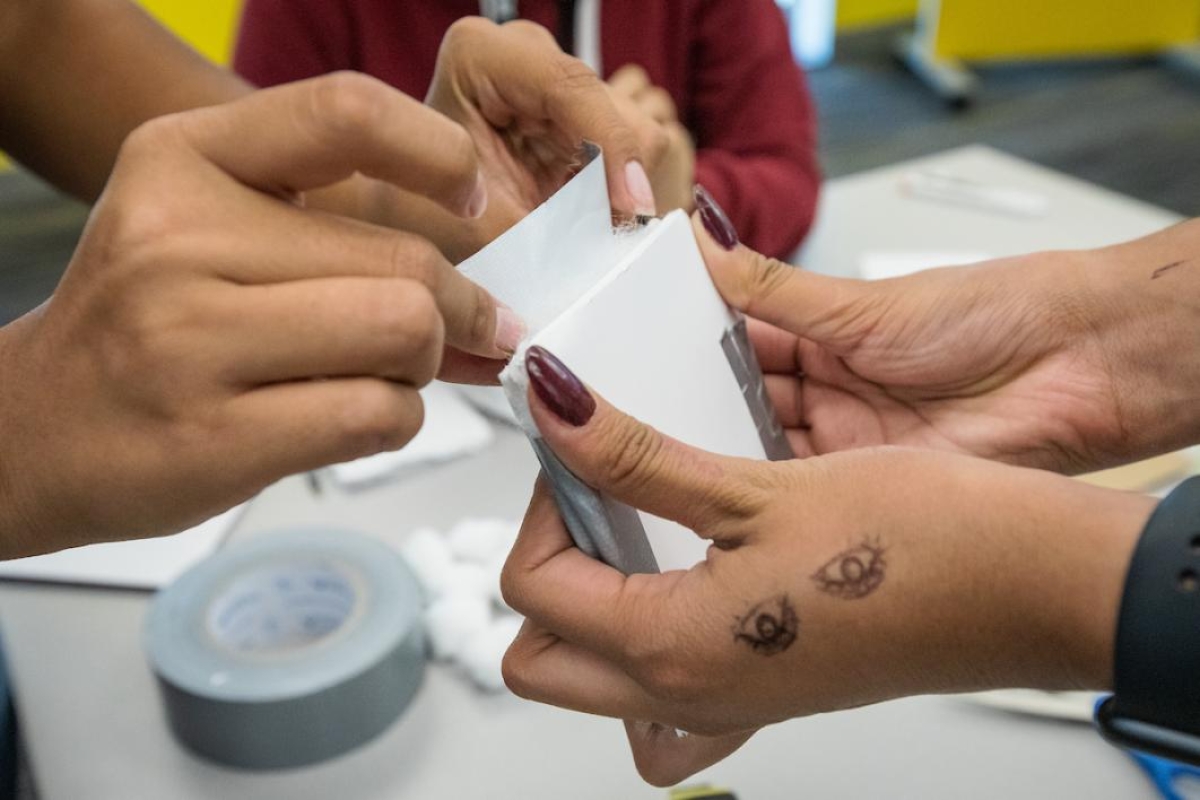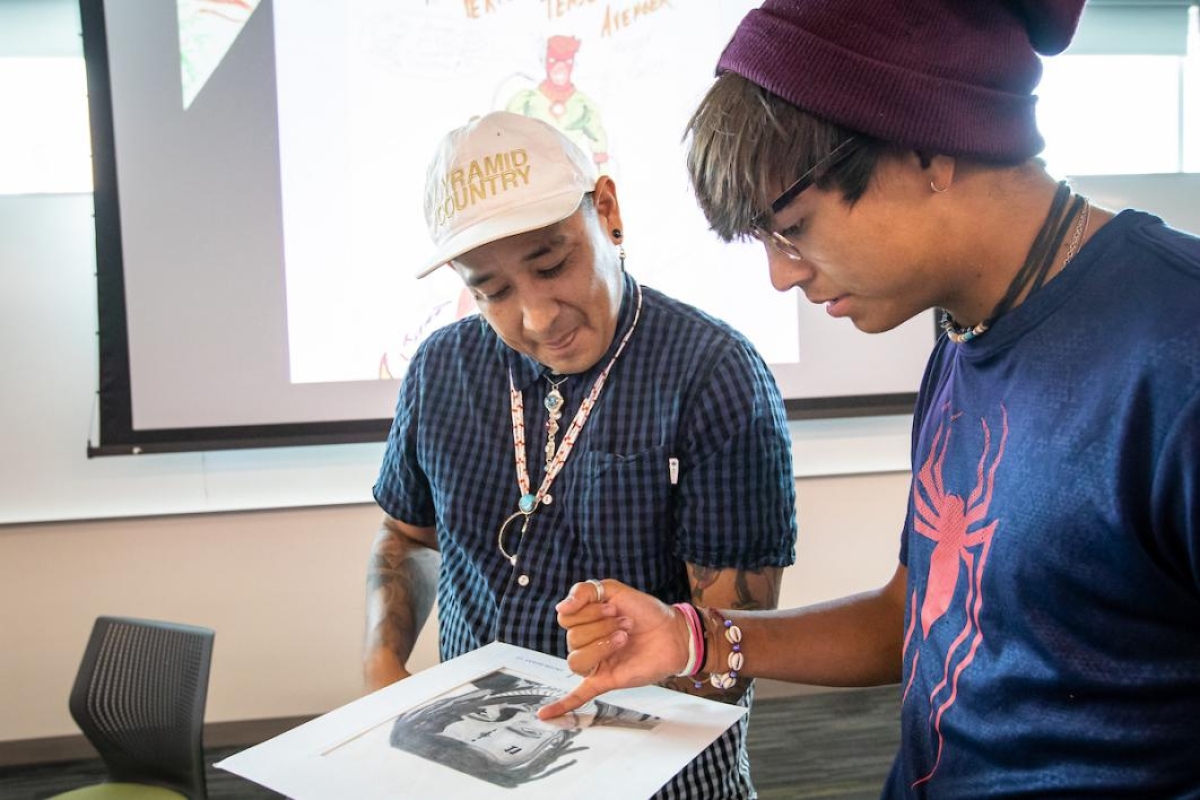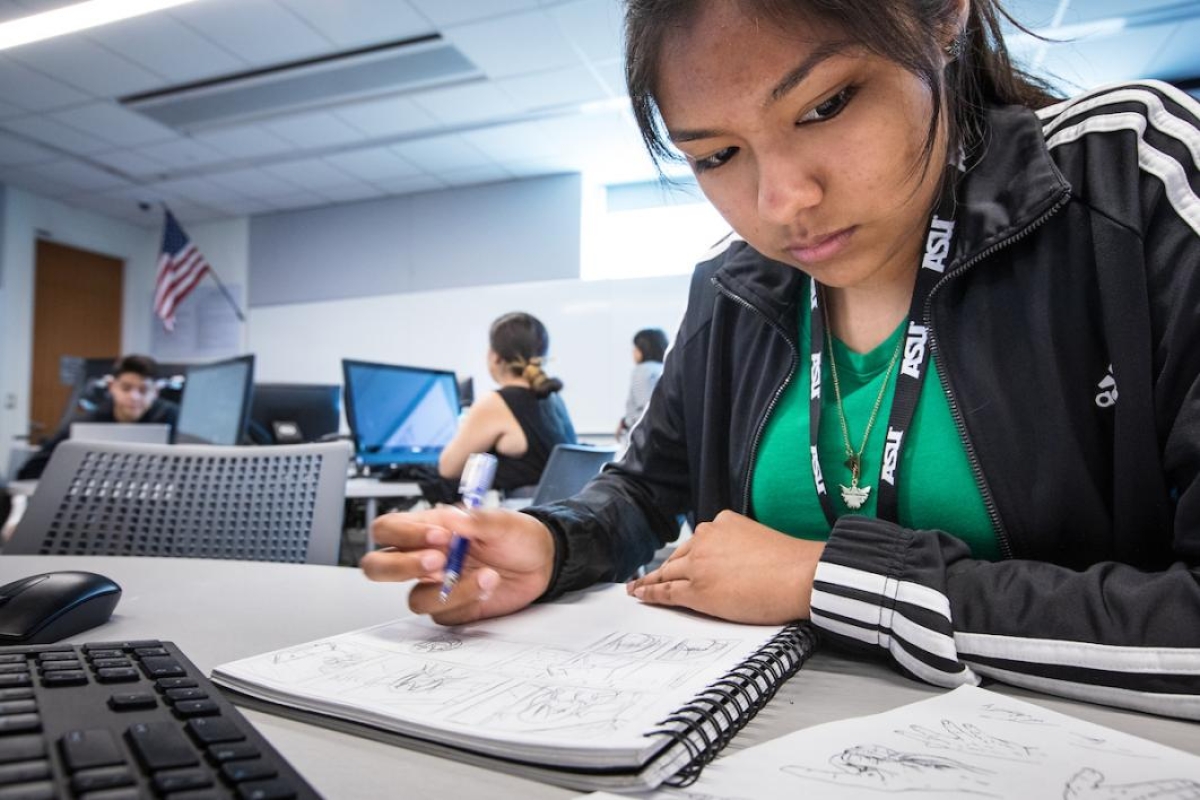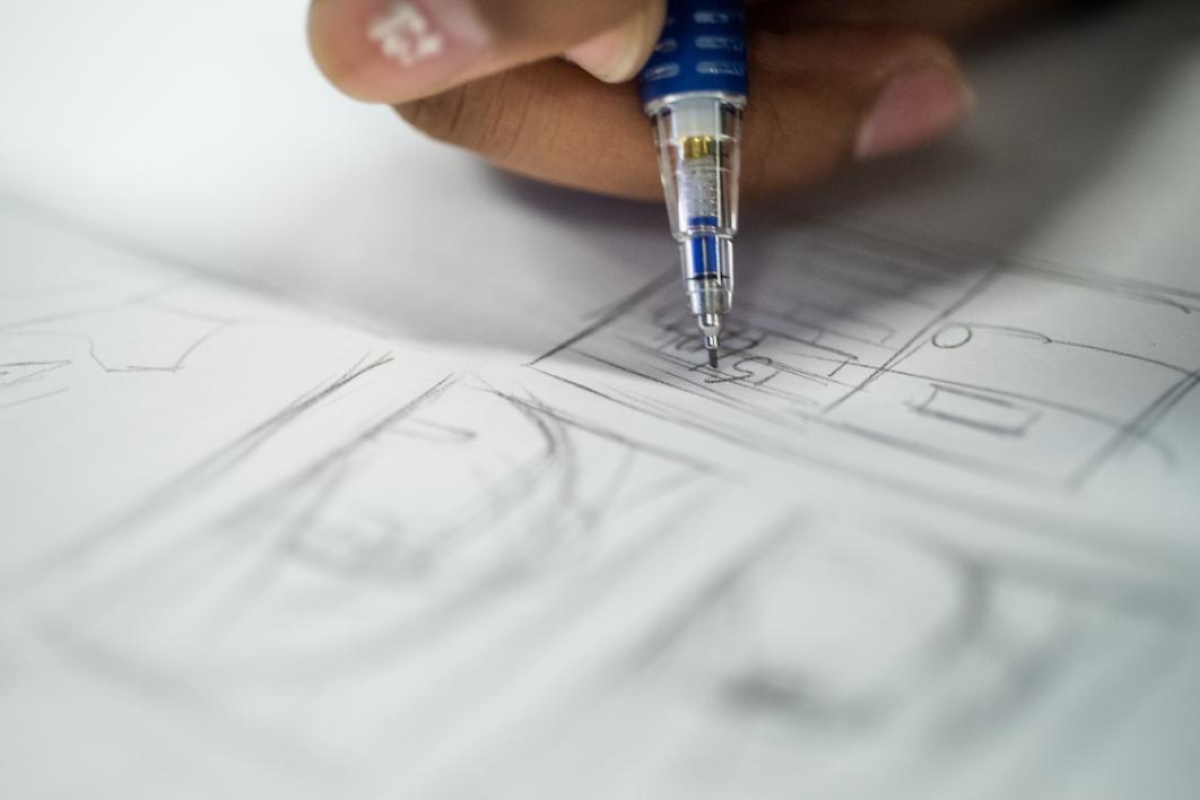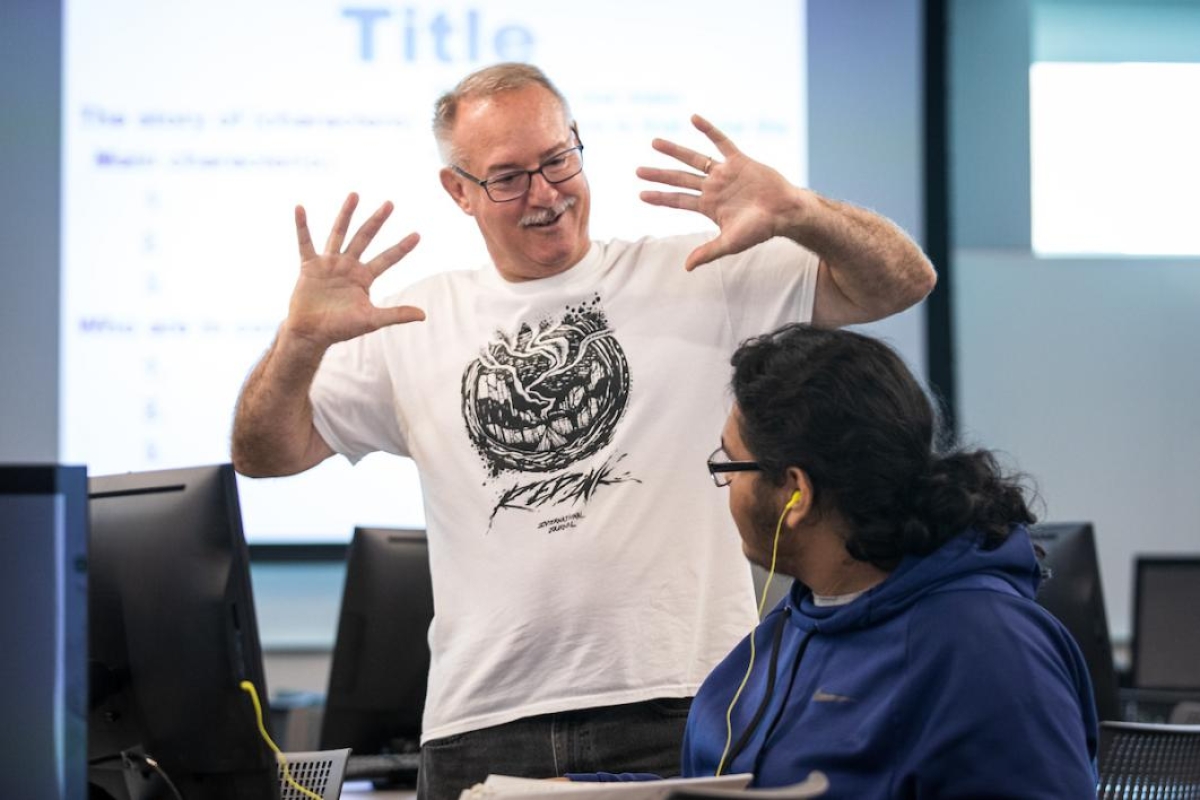Arizona State University history alumnus Kino Reed regularly teaches O’odham cultural studies and social studies at Salt River High School near Scottsdale, Arizona. But this last week he was back at his alma mater, leading American Indian high schoolers from across the Valley in collaborative design, nation-building and futurism activities in a project called “Engineering the Homeland in 3001.”
"One of my goals was to start helping students to understand that Native knowledge is scientific," said ReedReed is a member of the Gila River Indian Community, Tohono O'odham and Shosone tribes. about his approach. "And at the same time help them understand the engineering field more and then make their own connections between the two."
Reed is one of several instructors and peer mentors involved in the Indigenous Imagination Initiative. The one-week, nonresidential summer program piloted at the ASU Tempe campus July 8–12 engaged youth in projects that asked them to imagine futures for themselves and their nations and connected them to the creativity and inspiration of indigenous people.
The initiative took almost a year to develop, said Jeanne Hanrahan, director of community outreach at ASU’s University College. She said a collaborative effort by ASU colleagues from K–12 outreach in the Ira A. Fulton Schools of Engineering and the Department of English RED INK Indigenous Initiative along with donor support not only made the program a reality for the 27 participants, but allowed them to attend at no cost.
“The program offered students a choice between focusing on an engineering track and a graphic novel track,” Hanrahan continued. “The cohorts shared a common foundation of presentations on storytelling and indigenous futurism then branched out to enjoy a range of workshops to support their projects. We engaged ASU’s indigenous community, including alumni, faculty, staff and students as well as community members to make this happen.”
The jam-packed week included team-building activities, painting, ideation and brainstorming sessions, talking circles, engineering design challenges, 3D printing workshops and sessions on how to craft a graphic novel.
The engineering cohort was a nice fit for 17-year-old Koi Quiver.
“I have a very mathematic brain, and I like putting stuff together,” said Quiver, who will be a senior at Buckeye Union High School next month. “It incorporates engineering and indigenous stories. I want to learn how to mash those two subjects together.”
Jaycee Nez, one of three peer mentors involved in the initiative, said Quiver’s curiosity and skill set warmed her heart.
“I like to see people who look like me and think like me, doing the same things,” said Nez, a chemical engineering major at ASU. “I want to see more Native Americans pursuing careers in engineering. ASU will inspire and guide them towards a better future."
The graphic novel track appealed greatly to 16-year-old Alana Lopez.
“I love to draw, but I don’t know how to tell stories,” said Lopez, who will be a senior at ASU Preparatory Academy, a charter school in downtown Phoenix. “I’m here to learn how to tell stories and express my feelings.”
Helping in that endeavor was Tyson Frank Powless, an ASU art major, commercial artist and an art editor for “RED INK: An International Journal of Indigenous Literature, Arts and Humanities.”
“Native youth have to feel safe in a setting away from home and need to relate to someone like me,” said Powless, who is Navajo, Oneida and Iroquois. “We want to get them into a comfort zone and let them know they have the freedom to create whatever they wish.”
Powless said the relationship has also been a two-way street.
“Having them approach me and saying, ‘We want your skills’ has been a blessing to me,” he said. “This is a group of students who will be putting art in future books, and that’s heavy. These kids have talent.”
That was evident to Marlena Candace Robbins, a professional artist who graduated from ASU with a master’s degree in American Indian Studies. Robbins’ workshop, “Art as a Spiritual Expression and Indigenous Well Being,” hit upon several themes, including ancestry and future generations.
“I talked about the next seven generations and what do we want for our great-great-great-greatgrandkids. How do we want them to live? What kind of communities do we want to build and leave behind for others?” said Robbins, who is Navajo.
Robbins’ teachings resonated with 16-year-old Nakeisha Nockideneh, who painted a desolate landscape featuring a Native American tipi.
“This painting reminds me of my background and encourages me to be more in touch with my culture,” said Nockideneh, who will be a senior this year at Mesa’s Westwood High School. "I’m now inspired to help change and improve things in my community."
Top photo: Salt River High School teacher Kino Reed introduces a project on designing and building a residential housing model in an engineering class, part of the Indigenous Imagination Initiative, on the Tempe campus on July 9, 2019. The goal was to build either a traditional or modern structure with the interior eight degrees cooler than the exterior. The one-week summer program for American Indian high schoolers utilizes cultural knowledge to develop creativity and identity. Photo by Charlie Leight/ASU Now
More Science and technology

New NIH-funded program will train ASU students for the future of AI-powered medicine
The medical sector is increasingly exploring the use of artificial intelligence, or AI, to make health care more affordable and to improve patient outcomes, but new programs are needed to train…

Cosmic clues: Metal-poor regions unveil potential method for galaxy growth
For decades, astronomers have analyzed data from space and ground telescopes to learn more about galaxies in the universe. Understanding how galaxies behave in metal-poor regions could play a crucial…
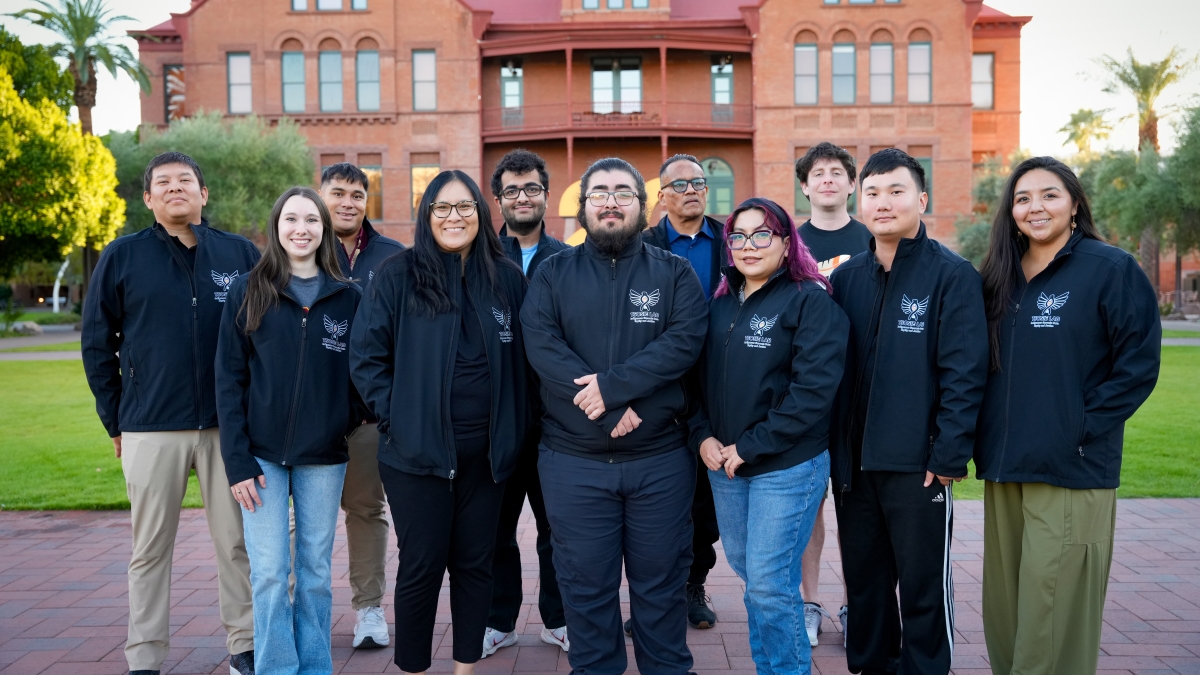
Indigenous geneticists build unprecedented research community at ASU
When Krystal Tsosie (Diné) was an undergraduate at Arizona State University, there were no Indigenous faculty she could look to in any science department. In 2022, after getting her PhD in genomics…
